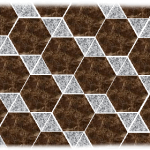
Category: Number Concepts, Patterns, and 3D Objects & 2D Shapes
Suitable for Grade Level: Elementary and Secondary
The Math in this Problem:
In this math puzzle, students experiment with shapes, particularly triangles and hexagons, creating different patterns involving these two forms. Examining the respective attributes to each shape, students are challenged to build various patterns based on the unique elements possessed by triangles and hexagons.

Fionn Mac Cumhail was Ireland’s greatest warrior mage. Through his knowledge of natural magic he grew in stature till he was three times the height of his fellow warriors.
Benandonner, the Scottish giant across the waters, challenged Finn Mac Cumhail to a fight, but because they couldn’t swim, a causeway or land bridge had to be built between Scotland and Ireland so that the two Giants could meet and do battle.
In white-hot anger, Fionn scooped up huge rocks and hurled them into the waters between Ireland and Scotland to build the causeway. One scoop gouged out Loch Neigh, Ireland’s largest lake and when it splashed between Ireland and Scotland that scoop became the Isle of Man.
Soon the causeway was complete, but instead of preparing for battle, Fionn decided to play a trick on Benandonner. He dressed up in swaddling clothes as a cute, but enormous baby and waited at his home for Benandonner to arrive. He waited and waited. Day and night and night and day he waited. Finally, Benandonner strode across the causeway dressed in boar skin and carrying his giant club. He was truly a giant among giants, but when he arrived at Fionn’s home and broke through the door he saw before him a baby nearly as large as himself. Terrified of the father of such an enormous baby, Benandonner ran all the way back to Scotland and never set foot in Ireland again.
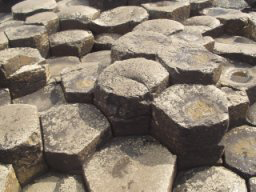
Later in life, when Fionn Mac Cumhail looked at the causeway he had created in his white-hot anger, he marveled to see at the patterns that he had created in the rock.
Amazingly, when the hot volcanic rock had cooled it had formed into hexagonal blocks.
Fionn Mac Cumhail decided to spend the rest of his life dedicated to creating patterns out of rock.
Specifically, he investigated patterns made with hexagons and triangles of side length 1m.
Fionn believed in the balance of nature. In his patterns, this meant that each triangle should share an edge with the same number of other triangles. In other words, no triangle should be favoured by sharing an edge with more of its friends than another triangle. He felt the same for hexagons so that no hexagon would be favoured by sharing an edge with more hexagons than another.
Below is an example of a Fionn pattern in which each triangle shares an edge with one other triangle and each hexagon shares an edge with 2 other hexagons:
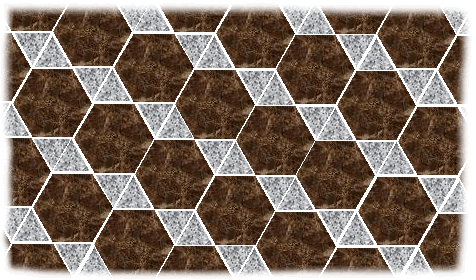
Find all possible Fionn patterns. Record them on the grid below and cross off any cells which are impossible to fill. The Fionn pattern above has been added in the correct cell:
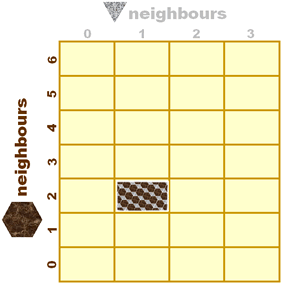
As a math fair problem, ask people to discover a solution for one cell.
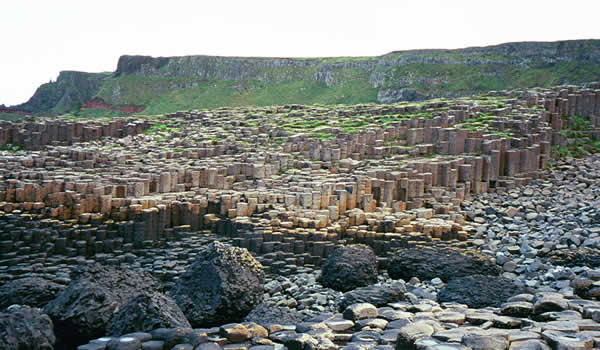
Extensions:
- Explore non-Fionn patterns that have each triangle sharing an edge with the same number of other triangles, but two classes of hexagons; the upper class of hexagons sharing more edges with other hexagons than the lower class of hexagons.
- Explore non-Fionn patterns that have each hexagon sharing an edge with the same number of other hexagons, but two classes of triangles; the upper class of triangles sharing more edges with other triangles than the lower class of triangles.
